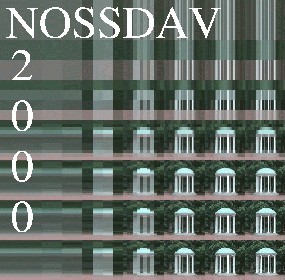
Paper #32
Providing Smoother Quality Layered Video Stream
Srihari Nelakuditi, Raja R. Harinath
Ewa Kusmierek & Zhi-Li Zhang
University of Minnesota, Minneapolis

|
Paper #32
|
In our work, we address this layer selection problem in layered video delivery and show how smoother 1 quality video play-back can be provided by utilizing the client buffer for prefetching. We first define smoothness criteria, design metrics for measuring it, and then develop off-line algorithms to maximize smoothness for the case where the network bandwidth is varying but known a priori. We then describe an adaptive algorithm for providing smoothed layered video delivery that doesnUt assume any knowledge about future bandwidth availability. The results of our experiments for measuring and comparing the performance these schemes are then presented. We conclude the paper with a brief discussion on our future work.



- Last revised: Weds Jun 27 20:56:29 EDT 2000
